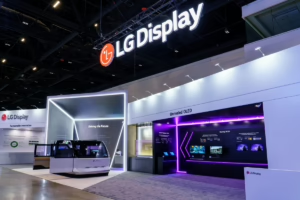LG Display’s research into fourth-generation OLED technology has been recognized with a Distinguished Paper of the Year award at the 2025 Society for Information Display (SID) Display Week. The awarded research centers on LG Display’s proprietary Primary RGB Tandem OLED structure, which vertically stacks separate red, green, and blue light-emitting layers. The design enables the panel to reach a peak brightness of 4,000 nits, reportedly the highest in the industry, with color brightness improving by 40% over the previous generation to 2,100 nits. The efficiency gains, an estimated 20% reduction in power consumption on a 65-inch panel, are particularly relevant in light of energy demands from new AI-integrated television platforms.
At Display Week 2025, LG Display also presented 16 additional research papers, including one highlighting a 480Hz OLED panel that leverages the company’s Dynamic Frequency & Resolution (DFR) technology. DFR allows displays to toggle between high refresh rate (FHD at 480Hz) for gaming and high resolution (UHD at 240Hz) for video content.

Two of the company’s commercial panels also secured People’s Choice Awards at the event. The 83-inch fourth-generation OLED TV panel won for Best OLED Technology, while the 57-inch Pillar-to-Pillar (P2P) Oxide LCD automotive display was selected for Best Automotive Technology.
While these accolades affirm LG Display’s technical trajectory, they come at a time of heightened competition from Chinese manufacturers who are narrowing the performance gap. The use of tandem OLED structures, for instance, is not unique to LG Display, and other panel makers are also actively exploring energy optimization amid global sustainability goals and shifting consumer expectations.
The strategic question ahead is whether these technological enhancements can translate into sustainable commercial advantages, particularly as macroeconomic pressures, oversupply risks, and slowing TV market growth challenge the profitability of even the most advanced display innovations.

